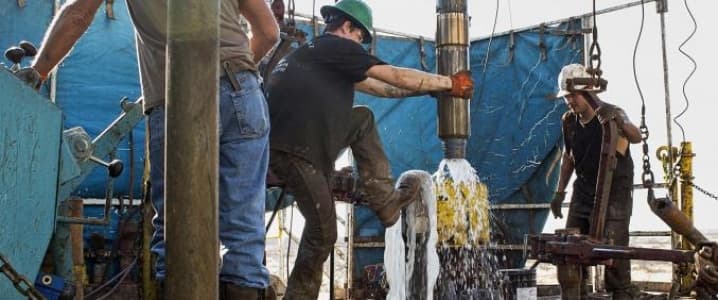Not everyone in the shale patch is profiting from the higher oil prices this year, the continuously rising oil production in the Permian, and the record U.S. crude output.
While larger players, including supermajors Exxon and Chevron, are expanding their Permian presence and aim to grow production volumes significantly over the next few years, small, third-tier exploration and production companies across the U.S. are struggling even at WTI Crude prices of above $60 a barrel.
Some small players who have been relying on borrowings to finance drilling are now finding themselves in a position to look for options to restructure debt, including by seeking Chapter 11 bankruptcy protection.
Despite the oil price rally in Q1 this year, some smaller firms are struggling to stay afloat. And analysts think that this year could be more painful for more E&P players in the shale patch than last year.
U.S. shale production growth is expected to slow this year, according to Schlumberger. The world’s biggest oilfield services provider cited “higher cost of capital, lower borrowing capacity, and investors looking for increased returns” as the primary reasons for an expected 10-percent drop in E&P investments in North America’s onshore this year.
The firms with lower borrowing capacity that have been relying on taking more debt in order to grow production are the first casualties of this business model. Some oilfield services providers are also struggling, including Weatherford International, which was the one of the top oilfield services provider until recently.
Earlier this month, Weatherford said that it had reached a deal with senior note holders about a financial restructuring aimed at significantly reducing long-term debt. The company expects the restructuring agreement to be implemented under a ‘pre-packaged’ Chapter 11 process and expects to file U.S. chapter 11 proceedings. Related: The Single Most Bullish Indicator For Oil
Last week, the NYSE suspended trading in Weatherford’s ordinary shares and said it intends to begin proceedings to delist the shares because they are longer suitable for listing due to “abnormally low” price levels. Weatherford plans to appeal that decision.
The financial struggles of what was one of the top drilling and well-completion services provider come as U.S. shale production is booming and the Permian continues to set new production records.
The shale production boom, however, is not a boon to all players in the U.S. oil patch. Under debt burdens, some smaller companies have opted for Chapter 11 proceedings to clean up their balance sheets.
Austin-based Jones Energy, for example, filed and emerged from Chapter 11 earlier this year to clean up the balance sheet, and to enter a new borrowing base agreement.
Yet, going into bankruptcy proceedings in order to restructure debt has not been the favorite choice of the companies’ boards.
“It takes a long time for the boards of these companies to really realize this may be the only way they can clean up the balance sheet,” Patrick Hughes, a partner at law firm Haynes and Boone LLP, told Bloomberg in an interview last week.
According to Haynes and Boone, the number of North American oil and gas producer bankruptcies has dropped significantly over the past three years, from more than 100 in 2015-2016 to 24 bankruptcy filings in 2017, 29 in 2018 and six as of May 1, 2019.
“Although still below the higher prices oil producers received last fall, the increase relieves a lot of pressure on many oil companies that avoided bankruptcy but remain weighed down by the hangover of high leverage taken on before the 2015 price crash. Even with the relief in oil prices, some companies remain financially stressed and may not be able to avoid restructuring their debt through bankruptcy. And some companies may be heading for Chapter 11 for a second time,” Haynes and Boone said in its Oil Patch Bankruptcy Monitor published last week. Related: Why Oil Is Still Underpriced
In the Oilfield Services Bankruptcy Tracker, Haynes and Boone said that between 2018 and Q1 2019, the number of bankruptcy filings in North America’s oilfield services industry dropped to 15 filings with aggregate debt of US$3.82 billion, from 40 filings and aggregate debt of US$35 billion in 2017. This drop in bankruptcy filings is attributed to higher oil prices.
According to Bloomberg estimates, a bankruptcy at Weatherford alone would mean US$8 billion of debt added to this year’s aggregate debts from bankruptcies.
“Capital markets – both equity and debt – have fallen significantly out of favor as sources of capital,” Haynes and Boone said in March in its Borrowing Base Redeterminations Survey for the spring of 2019.
Experts and analysts expect that more third-tier indebted companies across the U.S. shale patch will come under financial distress this year despite the $60 WTI price—a trend that’s not immediately visible when one looks at the record American oil production.
By Tsvetana Paraskova for Oilprice.com
More Top Reads From Oilprice.com:
- OPEC To Meet In Saudi Arabia To Discuss ‘Oil Supply Security’
- Putin Could Cut His Loss As Venezuelan Oil Output Nosedives
- Russia Aims To Exploit Africa’s Energy Potential


















